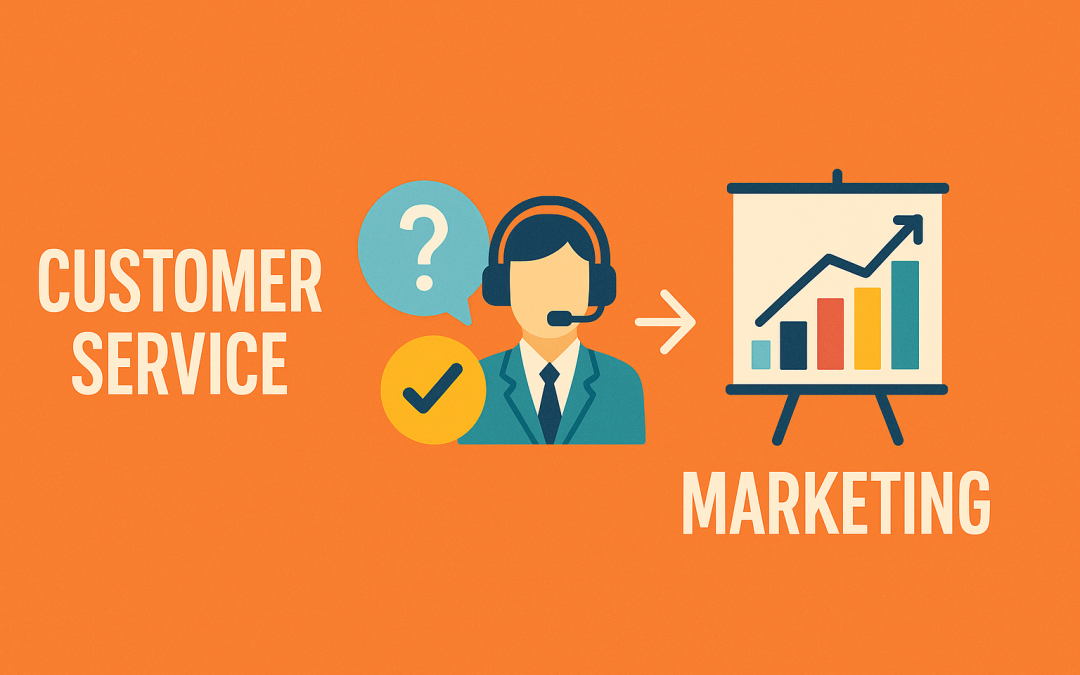Twelve weeks ago, I ordered a refurbished pool table. It was supposed to take five weeks. That’s what they promised. But week after week, nothing. So finally, we reached out for an update.
Their response?
“You’ll get it when you get it.”
That wasn’t just frustrating. That was a message. A message about how some companies have forgotten that customer service is the face of their brand. It’s not a back-office function. It’s front and center.
Then, when the table was finally ready, they said they’d deliver it the next day. But if we weren’t available, we’d have to wait another six weeks to get it. No options. No flexibility. No empathy.
It was a reminder that no amount of good branding can cover up bad service.
You can have a polished logo, a sleek website, and clever messaging. But if your customers feel dismissed or disrespected, that is your brand. What you say through marketing doesn’t matter nearly as much as how people feel when they experience your business.
Customer Service Is Your Real Brand Voice
Every customer interaction is a brand moment. The receptionist who answers your phone. The person who responds to your emails. The delivery driver who brings your product. All of them carry your brand in the way they serve, speak, and follow through.
Your brand is not just what you claim. It’s what your people do. Poor customer service erodes trust faster than anything else.
If you’re serious about building a brand that grows, retains, and inspires loyalty, then you need to start looking at the customer experience as your most important marketing channel.
The Customer Isn’t Always Right, but They Always Deserve to Be Heard
Let me be clear. I don’t believe the customer is always right. Sometimes they’re rude. Sometimes they’re misinformed. And sometimes they push for things that don’t align with your values or your policies.
But how you handle those moments says everything about your brand.
You can maintain boundaries and still serve with class. You can protect your team and still extend respect. And you can say no without burning the bridge.
Here’s how to do it well:
- Lead with Empathy, Not Ego
Even if a customer is being difficult, there is usually something behind it. Frustration, confusion, unmet expectations. A simple acknowledgment like “I can see how that would be frustrating” helps de-escalate tension fast. - Set Clear Expectations from the Start
A lot of customer issues stem from lack of clarity. Be proactive about timelines, deliverables, and policies. People are less upset when they aren’t surprised. - Offer Alternatives, Not Excuses
If you can’t do what they want, don’t just say no. Offer a next-best solution. “Here’s what I can do for you” shows that you’re still in their corner, even if the original ask isn’t possible. - Protect Your People Publicly, Coach Privately
When a client crosses the line, back your team up. A strong leader shows up for their staff in the moment, then follows up behind the scenes with the customer if needed. Loyalty is built from the inside out. - Know When to Let Go
Not every customer is the right fit. If someone repeatedly disrespects your staff or tries to manipulate your process, it’s okay to part ways. Saying no to the wrong customer can make space for the right ones.
How to Evaluate and Improve Customer Service
- Walk Your Own Path
Try being your own customer. Call your business. Email your support inbox. Try placing an order. Was it simple? Did it feel respectful? The experience you create will either build trust or break it. - Talk to Your Team
Your employees know the truth. Ask them what complaints they hear. What’s frustrating customers the most? What tools or flexibility do they need to serve better? - Review Your Reviews
Google, Yelp, social media comments. People are already talking about their experiences with your brand. Are they being heard? What are they consistently saying? These are real-time brand signals. - Train for Empathy, Not Just Protocol
Following the rules is important, but so is reading the room. Your team needs to be empowered to listen, respond, and solve problems creatively. That’s where real brand loyalty begins. - Always Follow Up
Service doesn’t end at the point of purchase. A follow-up email, a call, or a text can show that you care beyond the transaction. It creates a memory, and memories drive loyalty.
The Takeaway: People Will Talk About How You Made Them Feel
That pool table company didn’t just delay a delivery. They missed an opportunity to create a customer advocate. Instead, they became a cautionary tale.
Service is marketing. Experience is branding. And the people you serve will always remember how you made them feel.
So ask yourself. If someone wrote a blog about your company, what would they say?
